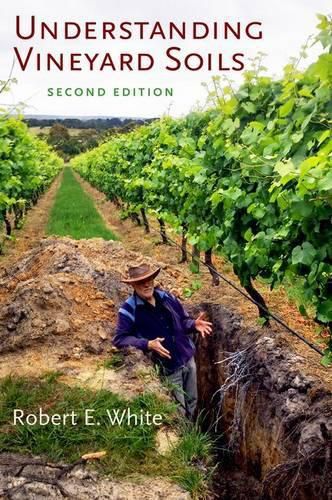Readings Newsletter
Become a Readings Member to make your shopping experience even easier.
Sign in or sign up for free!
You’re not far away from qualifying for FREE standard shipping within Australia
You’ve qualified for FREE standard shipping within Australia
The cart is loading…






The first edition of Understanding Vineyard Soils has been
praised for its comprehensive coverage of soil topics relevant to
viticulture. However, the industry is dynamic–new developments are
occurring, especially with respect to measuring soil variability,
managing soil water, possible effects of climate change, rootstock
breeding and selection, monitoring sustainability, and improving grape
quality and the typicity of wines. All this is embodied in an
increased focus on the terroir or sense of place of vineyard sites,
with greater emphasis being placed on wine quality relative to quantity
in an increasingly competitive world market. The promotion of organic
and biodynamic practices has raised a general awareness of soil
health , which is often associated with a soil’s biology, but which to be properly assessed must be focused on a
soil’s physical, chemical, and biological properties. This edition of
White’s influential book presents the latest updates on these and other
developments in soil management in vineyards. With a minimum of scientific jargon, Understanding Vineyard Soils
explains the interaction between soils on a variety of parent materials
around the world and grapevine growth and wine typicity. The essential
chemical and physical processes involving nutrients, water, oxygen and
carbon dioxide, moderated by the activities of soil organisms, are
discussed. Methods are proposed for alleviating adverse conditions such
as soil acidity, sodicity, compaction, poor drainage, and salinity. The
pros and cons of organic viticulture are debated, as are the possible effects of climate change. The author
explains how sustainable wine production requires winegrowers to take
care of the soil and minimize their impact on the environment. This book
is a practical guide for winegrowers and the lay reader who is seeking
general information about soils, but who may also wish to pursue in more
depth the influence of different soil types on vine performance and
wine character.
$9.00 standard shipping within Australia
FREE standard shipping within Australia for orders over $100.00
Express & International shipping calculated at checkout
The first edition of Understanding Vineyard Soils has been
praised for its comprehensive coverage of soil topics relevant to
viticulture. However, the industry is dynamic–new developments are
occurring, especially with respect to measuring soil variability,
managing soil water, possible effects of climate change, rootstock
breeding and selection, monitoring sustainability, and improving grape
quality and the typicity of wines. All this is embodied in an
increased focus on the terroir or sense of place of vineyard sites,
with greater emphasis being placed on wine quality relative to quantity
in an increasingly competitive world market. The promotion of organic
and biodynamic practices has raised a general awareness of soil
health , which is often associated with a soil’s biology, but which to be properly assessed must be focused on a
soil’s physical, chemical, and biological properties. This edition of
White’s influential book presents the latest updates on these and other
developments in soil management in vineyards. With a minimum of scientific jargon, Understanding Vineyard Soils
explains the interaction between soils on a variety of parent materials
around the world and grapevine growth and wine typicity. The essential
chemical and physical processes involving nutrients, water, oxygen and
carbon dioxide, moderated by the activities of soil organisms, are
discussed. Methods are proposed for alleviating adverse conditions such
as soil acidity, sodicity, compaction, poor drainage, and salinity. The
pros and cons of organic viticulture are debated, as are the possible effects of climate change. The author
explains how sustainable wine production requires winegrowers to take
care of the soil and minimize their impact on the environment. This book
is a practical guide for winegrowers and the lay reader who is seeking
general information about soils, but who may also wish to pursue in more
depth the influence of different soil types on vine performance and
wine character.